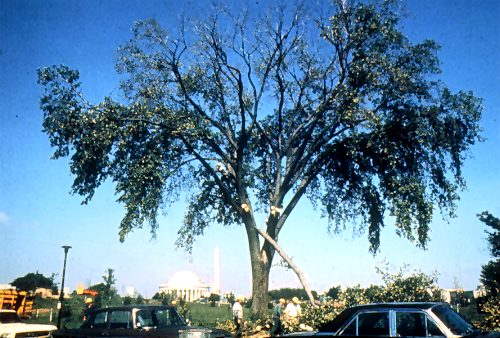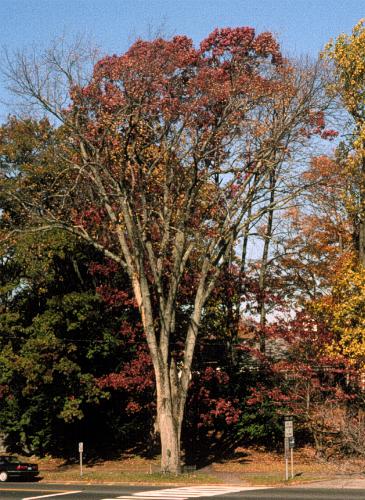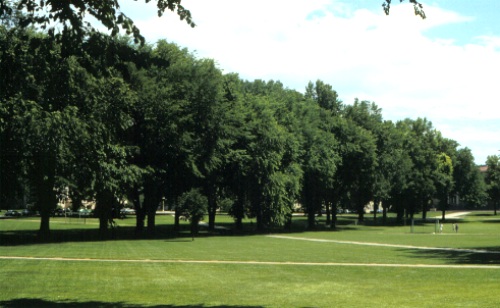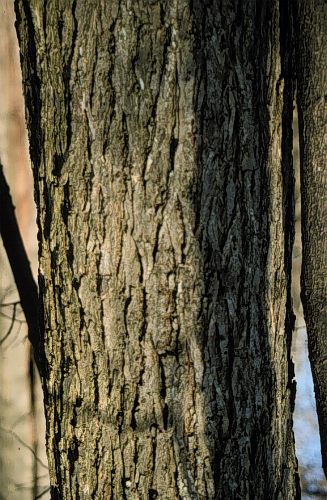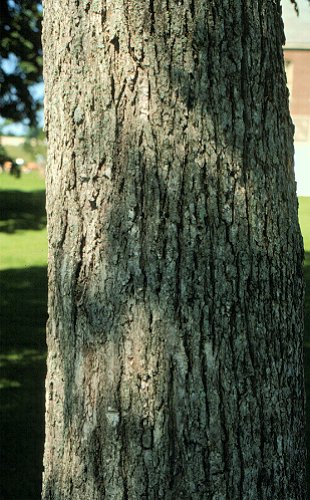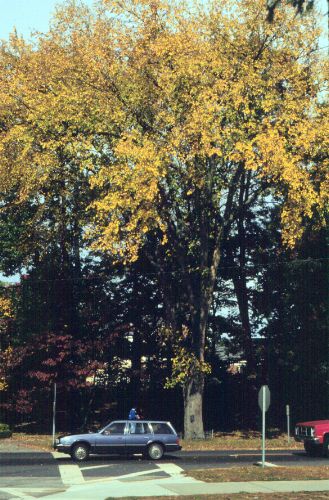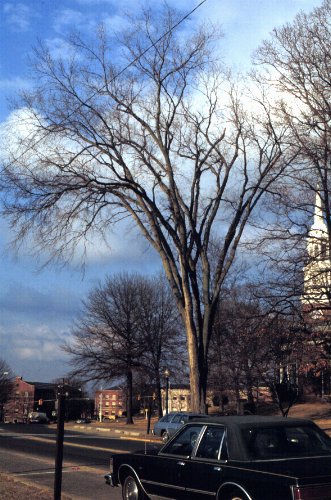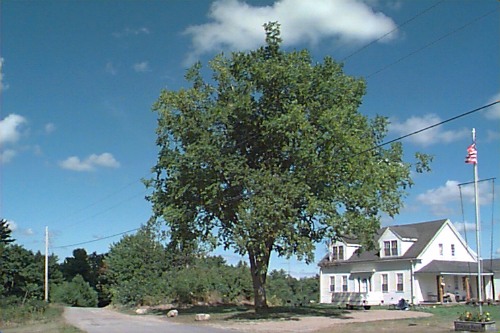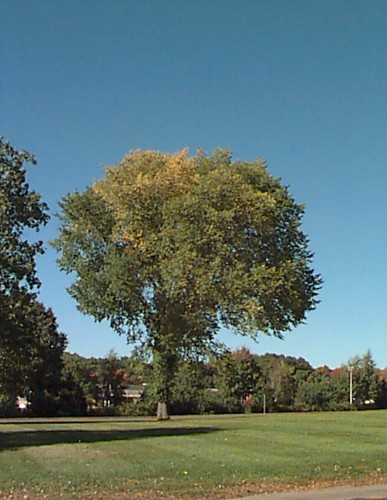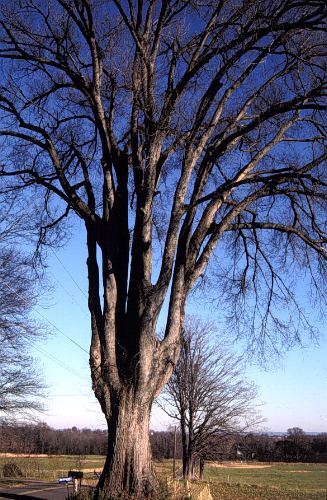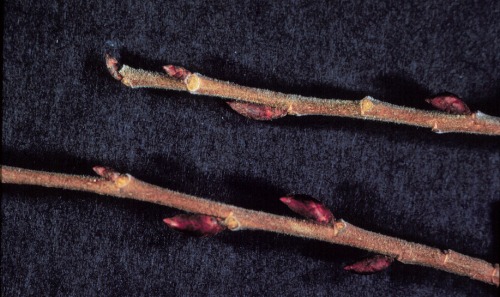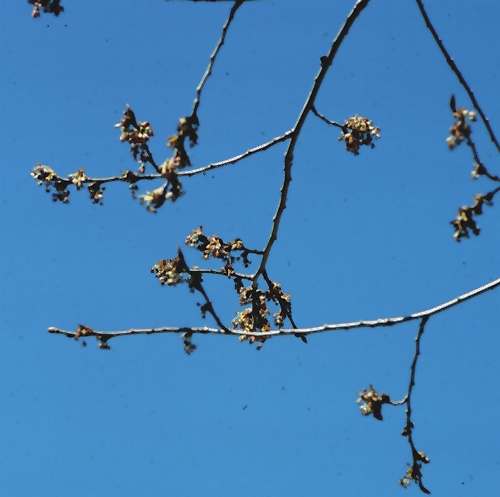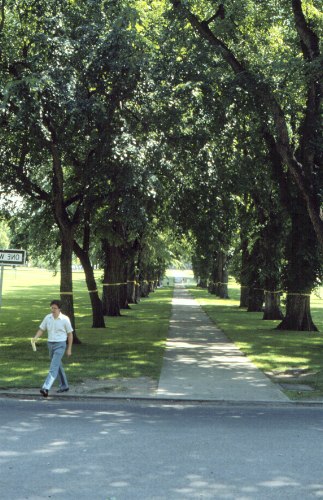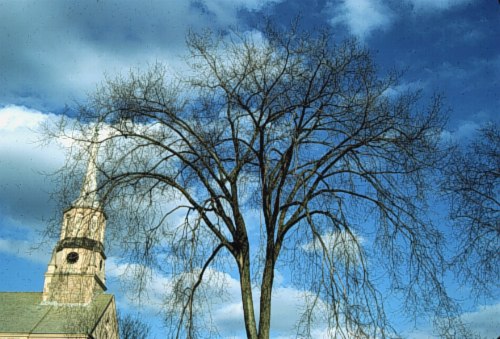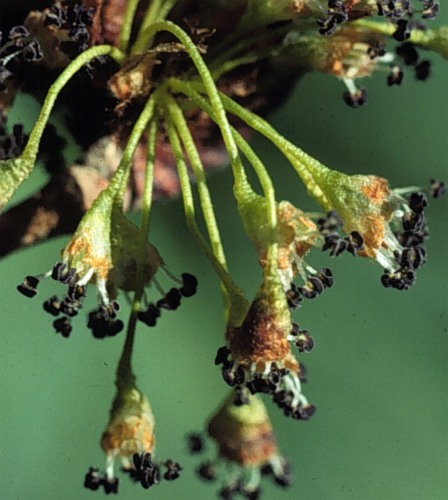Ulmus americana
American Elm, White Elm
Ulmaceae
ExpandHabitat
- native to eastern North America, from Florida to Newfoundland
- zone 3
- generally found in wetlands
Habit and Form
- large, deciduous tree
- Three distinct habits:
- vase-shaped (most common)
- "oak-like" - broad and wide spreading, rounded
- narrow with numerous branches covering trunk, columnar
- 60' to 90' tall
- width depends on habit of specimen
- medium texture
- medium growth rate
Summer Foliage
- alternate leaf arrangement
- simple leaves with doubly serrated leaf margins
- leave size varies from 3" to 6" long
- oblique leaf base
- serrate leaf margins
- leaves have pubescent underside
- there are approx. 15 pairs on veins on each leaf
- leaf surface is rough
- short petiole
- dark green leaf color
- no terminal bud
Autumn Foliage
- turns yellowish-brown
- not ornamentally important
Flowers
- not of any ornamental value
Fruit
- rounded samaras
- notched at top
- 0.5" in diameter
- greenish yellow in color
- ripens May through June
- not noticeable
Bark
- dark gray color with deep ridges
- can be scaly when young
- ridges criss cross, showing different layers of bark color
- pubescent stems, reddish
- leaf scar appears to look like a "cat-face"
Culture
- easily transplanted
- pH adaptable
- prefers moist, fertile soil
- prune in September to October
- soil salt tolerant
Landscape Use
- for beautiful habit
- street tree
- lawn tree
Liabilities
- Dutch Elm Disease, has nearly wiped out species in North America
- Wetwood
- cankers
- leaf curl
- leaf spot
- powdery mildew
- aphids
- elm leaf minor
- elm leaf beetle
ID Features
- deeply ridged bark with criss cross pattern
- samaras in spring
- no terminal buds
- rough textured leaves with many paired veins
- alternate leaf arrangement
- oblique leaf base
- doubly, serrate leaf margins
- pubescent stems
- deciduous, generally vase-shaped
Propagation
- cultivars, by cuttings
- by seed
Cultivars/Varieties
Due to the continued pressure of Dutch elm disease (DED), only those cultivars selected for reported disease resistance are listed below. The older fastigiate forms and colored-leaf forms are probably now extinct or rarely grown. Plants described here are mostly new selections, and continued research will be necessary to elucidate their true landscape merit. It is also important to remember that DED-resistant cultivars are not necessarily immune to other diseases, such as "elm yellow" (a phloem necrosis ailment).
'Delaware #2' - This is a vigorous form that grows to 80' tall with a spreading crown. It has expressed strong resistance to DED in early trials.
'Jefferson' - This selection, released by the National Park Service, is probably a hybrid cultivar. It shows good resistance to DED and grows to 50' tall and wide with a vase-shape and arching branches.
'Liberty' (also known as 'American Liberty') - Though widely promoted, this reportedly DED-resistant selection is problematic since the "cultivar" is actually comprised of more than one clone. In addition, the disease resistance of this plant has not proven to be as strong as other forms, and observations have revealed high rates of "elm yellows" disease.
'New Harmony' - Considered one of the better forms, though its DED tolerance is far inferior to 'Valley Forge'. With age the tree is nevertheless attractive, as it forms a broadly-upright grown with arching branches to 70' tall and wide.
'Princeton' - This vase-shaped selection, which bears handsome foliage with good substance, has shown good resistance to DED. It grows quickly and is becoming more common in commerce. It forms the traditional vase shape, to 70' tall and 50' wide with yellow fall color. It is actually an older clone developed before the advent of DED in the United States.
'Valley Forge' - A U.S. National Arboretum introduction, this plant is probably the best choice for installation in modern landscapes due to its high DED resistance. The growth form is highly reminiscent of the "classic American elm" -- upright-arching and vase-shaped to 70' tall and 60' wide. The green foliage turns yellow in autumn.
